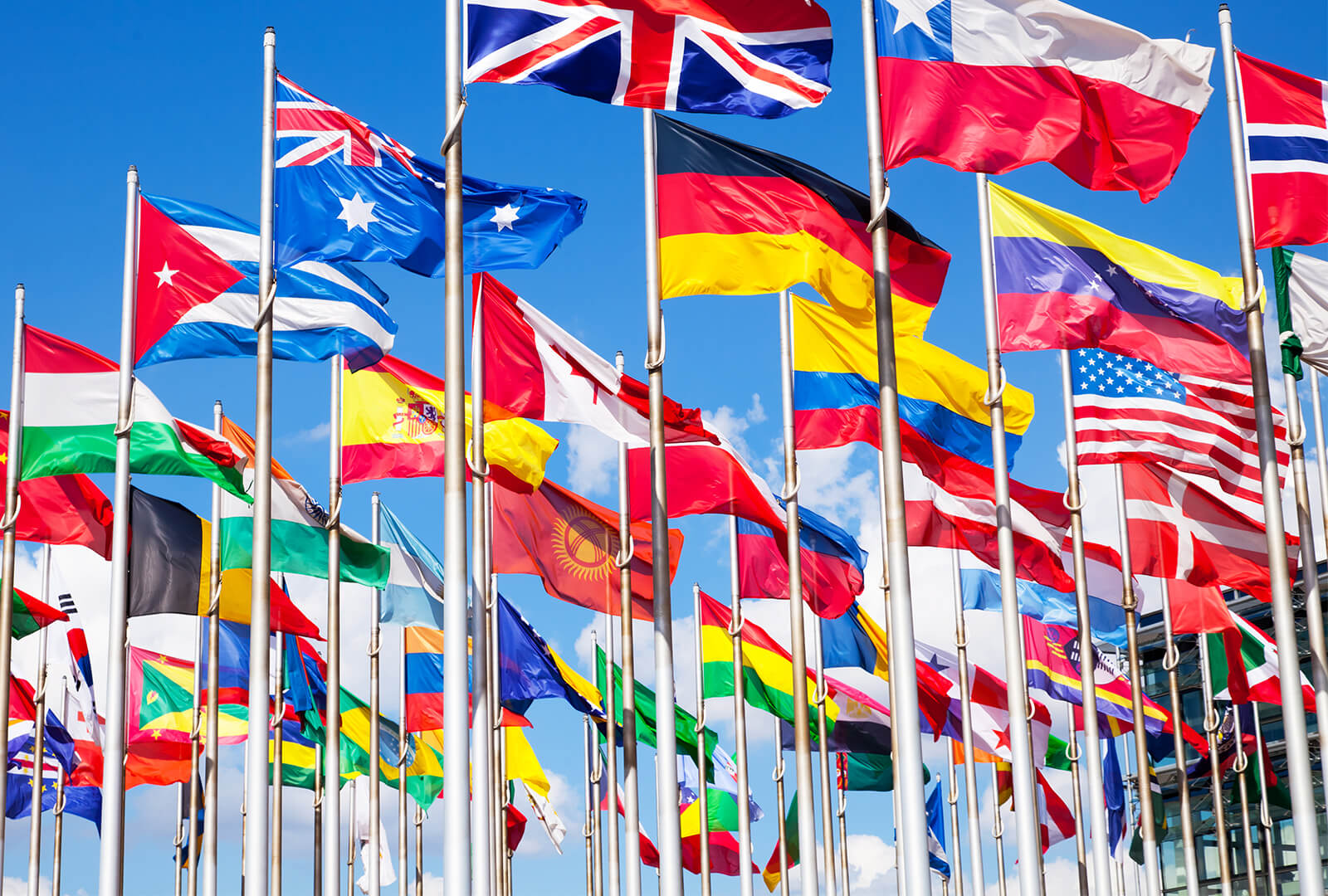When your mission is all about feeding the world, it makes sense to operate throughout the world. Hormel Foods has been doing it for a century, having formalized the endeavor in 1967 with the establishment of an international division. Today, the wholly owned subsidiary known as Hormel Foods International Corporation (HFIC) has a portfolio of 80-plus countries to its credit, and it’s not slowing down.
In fact, when Hormel Foods Chairman of the Board, President and CEO Jim Snee spoke at the company’s 2018 annual meeting, he promised a heightened focus on the company’s “international presence” in order to grow the business and deliver optimal shareholder value.
Larry Vorpahl, for one, is delighted that his CEO has “agreed to bet on International.” Larry serves as group vice president of Hormel Foods and president of HFIC. He believes firmly the subsidiary under his watch will experience above-average growth in both the short and long term. Indeed, it’s already delivering above-average results.
Relatively small, the International segment accounted for $545 million – or 6 percent – of the Hormel Foods revenue in 2017, but if things go according to plan, that will change. “We’re working for 10 percent growth on the top line and 15 percent growth on the bottom line,” Larry says.

Larry Vorpahl, Hormel Foods group vice president and president, Hormel Foods International
They’re ambitious goals that are rooted in reality. “If you think about international expansion in general, the gross domestic products around the world are growing faster [than the United States’ GDP]. China is at 6.8 percent, the Philippines is at 8 percent. There are growing middle classes and a greater demand for convenience products that is outpacing the United States,” Larry says.
Hormel Foods is not alone in its thinking. Many U.S. companies are adopting a strategy that looks beyond their country’s borders, says Wharton Magazine, a publication of the University of Pennsylvania.
“For any business in today’s world, not expanding internationally is practically a sin. Not only does such expansion provide diversification and additional revenue, it also exposes one to different methods of doing business. In addition, the U.S. business that expands overseas can benefit back home from increased cultural sensitivity, competitive intelligence, new opportunities and better management practices.”
To Market. To Market.
There are three ways Hormel Foods brings its products to international markets, Larry points out.
The first is by exporting items produced in the United States. “That’s where the business started,” Larry says. The SPAM® brand and Hormel® chili, for example, are made in the U.S., and shipped overseas.
No one at Hormel Foods has logged more time in the International segment than Tim Barinka. The director of marketing and administration for Hormel Foods and vice president of Hormel Foods International has close to 30 years of history and experience in the company’s operations outside of the United States.
“When I came in 1989, it was very much an export-driven business,” he says. “Our business model was taking U.S.-made products and selling them overseas. We used U.S. formulas, U.S. packaging, U.S. advertising. And there was nothing wrong with that. It worked for us.”
However, countries often have laws and guidelines in place, especially where meat is concerned. “There are barriers to entry,” Larry says. “You need to have in-country manufacturing or find a partner who is there on the ground,” he says.
That’s where partnerships, in which Hormel Foods joins forces with an entity that is present in a specific country, come in. “This method began for us in the ‘70s,” Larry says. “We started some partnerships in places such as Okinawa in Japan and San Miguel in the Philippines.”

Sisig is a popular recipe in the Philippines using SPAM® products
The third way is through a multinational operation, where Hormel Foods has a wholly owned in-country operation. “That’s where we do everything. China is a good example of that,” Larry says.
Nothing Better Than Being There
The present-day goal of HFIC is to follow a multinational approach, as it has done in China. For 20 years, the company has built a business – and its brand – from the ground up. “It’s our gold standard,” Tim says. “We’re in country with people and management teams who have a better understanding of customers and consumers.”
Hormel Foods has three manufacturing facilities in China, including a new, state-of-the-art plant in Jiaxing that is poised to double its production capacity in China, even as it allows it to produce SPAM® products in country for the first time. The latter alone offers tremendous promise. China is a nation of 1.6 billion people. Meat consumption – especially of pork – is high; the canned meat category is the largest in the world.

Ground breaking for the plant located in Jiaxing, China.
“The new plant rivals anything we would have in the U.S., in terms of food safety and capacity,” Larry says. “We used our expertise and know-how. We sent people over to the United States to learn the processes. It gives us the ability to grow into the future.”
Bem-vindo ao Brasil
The Chinese operation is one of the segment’s success stories, but it has been two decades in the making, Larry says. In a recent case of global expansion, Hormel Foods wanted to see results much sooner.
Tim, who oversees business development for the International segment, had been working on studies of three regions – Latin America, Asia Pacific and Africa – to help identify markets with the most potential. The exercise led to the 2017 acquisition of Cidade do Sol, owners of the Ceratti® brand, an 80-year-old Brazilian company known for its production of premium deli-meat products such as mortadella, sausage and salami for Brazilian retail and foodservice markets.

With that, Hormel Foods International had an instant presence in Brazil and the blossoming South American market, not to mention ownership of a company that has been experiencing double-digit growth numbers of late. It also allowed Hormel Foods to gain entry into what Larry describes as a “very restrictive country with a strong meat/protein industry and huge barriers to entry.”
The move marked the first time Hormel Foods acquired a company outside of the United States specifically for the International segment. It’s not likely to be the last.
“We’ll look for other sizeable acquisitions that can be bolted on to give us some significant scale,” Larry says.
Cultural Exchange
Perhaps it goes without saying that operating outside of the United States poses challenges to Hormel Foods. “Every country has its own set of rules, ways of doing business, taxes and other things,” Larry says. The company strives to conduct business in the language of the country it’s in, so there’s often a need for translators.
However, when it comes to employees, the company takes great pride in an approach that transcends borders.
For example, HFIC recently brought the Cultural Beliefs of Hormel Foods to all of its operations, with Ceratti being the latest to come on board. “It gets everybody in the company on the same page in terms of our language, mission, vision,” Larry says.
What he and others have found is a universal language of fairness, empowerment and other values that define the 125-year-old company.
“Employees really like being part of Hormel Foods. They’re happy to be part of who we are.”
